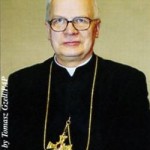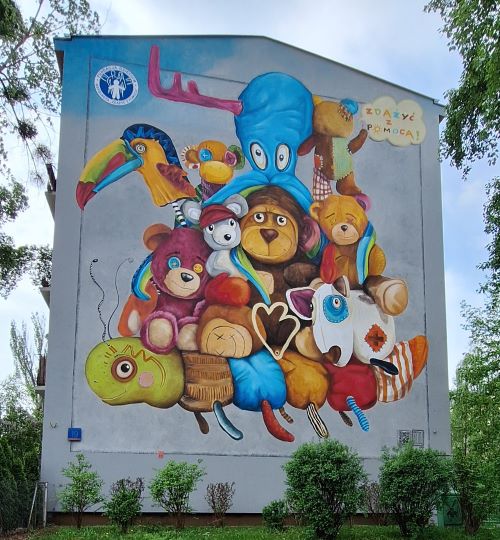20 kwiecień 2008
Hope and anxiety
Among Poland’s most crippling problems are the countryside and agriculture. The farming census included 10.5 million people (27.4 percent of the general population) who – together with family members – are connected to the land and agriculture. Polish farming is particularly fragmented and over-populated. Barriers to an improvement in the agrarian structure are unemployment and very limited opportunities for income outside of agriculture.
LUDWIK STASZYŃSKI
Among the ten countries which joined the European Union May 1, 2004, the one in first place, in terms of population, territory, industrial and agricultural production is Poland. The country has a central geographical location between Eastern and Western Europe. For the 15 current EU states it is therefore particularly important among new members. Poland is a partner but, in many areas, is also an agricultural opponent and competitor on the international market. Moreover, integration with the EU, and the conditions upon which this process is based, will probably have much greater meaning for Poland than for the remaining candidate countries. Among the voices which reach Poland from the Union, there is a dominating conviction that expansion, including integration with Poland, will greatly benefit both the states and peoples of Western Europe. Poles also hope, a feeling which was expressed in the referendum that determined the country’s participation in integration. The future will show who is right.
Poles will enter the EU with many unsolved problems, chaos on the political scene and a whole range of unsatisfied needs as well as unfulfilled expectations after 15 years following the fall of communism. Poland will be a troublesome partner for the wealthy majority of current states in the EU. This requires understanding, solid cooperation and help from the EU in solving complicated problems. Integration should make this easier.
Other side of the coin
Freedom knocked on the door in 1989 and was joyfully welcomed by the Polish people. However, it did not bring better times to everyone. The reforms undertaken and then continued did not reduce the intensity of negative social phenomenon from the days of communist rule but rather brought about their considerable escalation. These conclusions are confirmed by research concerning the living conditions of Poland’s residents conducted by the Polish Central Statistical Office. In 2002 only every ninth family declared that it was living in good conditions. Approximately 34.5 percent declared themselves as poor. In 1984 that number was 10 times lower at 3.5 percent. Of respondents, 58.7 percent spend less than the minimum wage, considered to be social minimum. Agricultural incomes were 23 percent lower than the average. In 2002 11.1 percent of Polish society, over 4 million individuals (17 percent in the countryside) lived below the biological minimum. Poverty largely touches households connected with agriculture or families of the unemployed, of which barely 17 percent are entitled to benefits. Eleven percent of children to the age of 14 living in cities and as much as 23 percent in the same age group in the countryside are counted among the poor. From government reports it can be concluded that malnourishment afflicts nearly half of the population. The alarming state of malnourishment among school children and orphans has been reported by teachers and child caregivers. The result of poverty is an increasingly visible demographic shift: a fall in the number of marriages and the birth rate. The death rate has overtaken the birth rate.
Unemployment in Poland is enormous and in the past five years has affected half of Polish families. The most dangerous effects of employment are families with many children. Nearly two-fifths (37 percent) of Polish households have faced the problem of unemployment. Almost one-fourth (24 percent) of the rural population declared themselves jobless and, in cities with 20 to 100 thousand residents, every fifth is unemployed. Joblessness is lower in smaller cities and larger agglomerations, at respectively 16 and 8 percent. One-third of the unemployed are young people between the ages of 18 and 34; one-fifth are between the ages of 35 and 54.
Social sentiments among young Polish intelligentsia are very disturbing. In a survey conducted in Warsaw universities, 47 percent of students declared their intent to emigrate immediately and 64 percent believe that Poland does not provide graduates with the chance for a professional career. As many as 78 percent claimed that after graduation they have no chance for financial stability.
The agricultural question –
the hardest problem
Among Poland’s most crippling problems are the countryside and agriculture. The farming census included 10.5 million people (27.4 percent of the general population) who – together with family members – are connected to the land and agriculture. Polish farming is particularly fragmented and over-populated. Barriers to an improvement in the agrarian structure are unemployment and very limited opportunities for income outside of agriculture.
After the fall of the communist system, the agrarian structure did not improve, rather, in a certain sense, it worsened. Almost 55 percent of those with farms larger than one hectare in 2002 lived on farms of up to five hectares. During the previous agricultural census in 1996 – the percentage of that population on farms of up to five hectares was lower – at 51.1 percent. These are millions of people. On farms with an area of below one hectare approximately three million people live. At their disposal are 396 thousand hectares of agricultural land area. Close to 1.8 million live on farms with an area of one to two hectares and from two to three hectares over 1.0 million, further 1,3 million live on farms between three and five hectares. Around 850 thousand reside on farmland between five and seven hectares. Thus, close to eight million people live on farms in Poland of up to seven hectares. Together they own 4.6 million hectares which is 32 percent of the total agricultural land area used for individual farming. For that segment of Polish society farming is an important, and often the only, basis for existence. Approx. one million rural residents receive an agricultural retirement pension. These pensions amount to an average of 150 euro monthly, or 63 percent of the average worker’s retirement. Most of them are financed by the state. Around 900,000 family members and agricultural proprietors also make a living from work primarily outside of agriculture. Before 1989 the number of farmers–workers was significantly larger in Poland. After 1989 workers with farms were the first to be laid off by liquidated or downsizing industrial plants.
In the countryside after 1989, there has been a developmental decline in Polish agriculture and a visible deterioration in the living conditions of its residents.
After EU integration
EU experts in the PHARE foundation expressed the view in their report of 1996 that fragmentation in Polish agriculture would continue for the next decades. So will overpopulation in the Polish countryside, where – according to their estimates – every third resident is unemployed. PHARE experts reached the conclusion that fragmentation in agriculture is currently beneficial for Poland because small farms ensure a living for millions of people. Without their farms, the responsibility of providing for the people living in these areas would have to be taken by the state.
The general situation of agriculture in the 15 EU member states will make looking for solving the agrarian problems in Poland even harder. Generally speaking, this situation is characterized by a surplus of food production in EU and fear on the part of the 15 concerning integration with Poland and the country’s large food production potential. These fears were unfortunately reflected in the accession treaty in which the European Commission was able to secure the maximum limits on the size of Poland’s agricultural production as well as those concerning economic support for Polish agriculture. The limits reduce Poland’s ability to compete on the European market. The EU’s agricultural strategy in relation to Poland was presented honestly in 1999 by Prof. Konrad Hagedorn from Humboldt University in Berlin for an interview in a Polish daily. He commented: „The EU candidate countries, first and foremost Poland, have very low costs of agricultural production and large production potential. That is why incentives for agricultural production in the new members must be reduced.”
The strategy outlined by Prof. Hagedorn was implemented by the European Commission successfully in the accession treaty signed with Poland. From the perspective of the 15 EU states this is undoubtedly a very positive achievement for the Commission from Brussels. However, in terms of its influence on the condition of agriculture in Poland and its allevation, not to mention the solution of particularly difficult agricultural problems, it is hard to call this agreement a success. Polish agriculture was dealt two sharp blows in the treaty – the first is a lower level of production and the second – poorer economic conditions in comparison with member of the EU to date. For example, the milk quota granted to Poland involves annually slightly less than 9 billion liters, even though consumption reaches 10 billion liters and in 1989 was over 14 billion liters. In a few years Poland will become a net milk importer without taking advantage of its comparative advantage and production capabilities.
A majority of Polish farmers supported the referendum on integration with the EU with hope and faith. That hope and faith should not be lost.
L
udwik Staszyński


























CATHOLIC CHURCH
Continuation and breakthrough
A little over 90% Poles declare themselves to be Catholic. However, 5% of believers do not attend church at all. 53,9% of believers declared they were living in accordance with the commandments of the Church. więcej...